French Press vs. Espresso: A Comprehensive Brewing Guide
In the world of coffee aficionados, the debate between French Press vs. Espresso brewing methods is both enduring and passionate. Each technique offers a unique approach to extracting flavors from coffee grounds, resulting in distinct taste profiles and brewing experiences. This guide delves into the intricacies of both methods, providing detailed insights, practical tips, and addressing common questions to help you determine which brewing style aligns best with your coffee preferences.
Understanding the Brewing Methods
French Press
The French Press, also known as a press pot or plunger pot, is a manual brewing method that involves steeping coarsely ground coffee beans in hot water before separating the grounds by pressing a metal or plastic plunger through the mixture. This technique allows the coffee's natural oils and fine particles to remain in the brew, resulting in a rich, full-bodied cup.
Key Characteristics:
-
Brewing Process: Immersion of coffee grounds in hot water, followed by filtration through a metal mesh plunger.
-
Flavor Profile: Yields a rich, full-bodied coffee with pronounced flavors and a heavier mouthfeel.
-
Brewing Time: Approximately 4 to 5 minutes.
-
Ideal For: Coffee aficionados who appreciate a robust, full-flavored cup and enjoy hands-on brewing.

Espresso
Espresso is a concentrated coffee beverage brewed by forcing hot water under high pressure through finely-ground coffee beans. Originating in Italy, espresso serves as the base for many popular coffee drinks, including lattes, cappuccinos, and macchiatos.
Key Characteristics:
-
Brewing Process: High-pressure extraction using finely-ground coffee.
-
Flavor Profile: Produces a strong, bold coffee with a rich crema on top.
-
Brewing Time: Typically 25 to 30 seconds per shot.
-
Ideal For: Those who enjoy a concentrated, intense coffee experience and the ability to craft various specialty drinks.

Comparative Analysis: French Press vs. Espresso
Brewing Technique
-
French Press: Utilizes an immersion method where coffee grounds steep in hot water, allowing for more controlled extraction and reducing the risk of over-extraction.
-
Espresso: Employs a high-pressure extraction method, forcing hot water through finely-ground coffee to produce a concentrated shot.
Flavor and Strength
-
French Press: Delivers a full-bodied, rich flavor with natural oils and fine sediments, providing a more nuanced taste experience without the bitterness associated with over-extraction.
-
Espresso: Offers a strong, bold flavor with a rich crema, resulting from the quick extraction process that allows for precise flavor control.
Caffeine Content
-
French Press: An 8-ounce cup typically contains around 80-120 milligrams of caffeine, depending on factors like coffee beans and brewing time.
-
Espresso: A single 1-ounce shot contains approximately 60-65 milligrams of caffeine.
Ease of Use
-
French Press: Offers a straightforward brewing process with minimal equipment, making it accessible for both novices and seasoned coffee drinkers.
-
Espresso: Requires specialized equipment and a certain level of skill to achieve optimal results, making it more challenging for beginners.
Versatility
-
French Press: Primarily used for brewing standard coffee, with limited options for creating specialty drinks.
-
Espresso: Serves as the base for a variety of specialty drinks, including lattes, cappuccinos, and macchiatos, offering greater versatility.
Step-by-Step Brewing Guides
How to Brew Coffee with a French Press
-
Preheat the French Press:
-
Pour hot water into the French press to warm it, then discard the water.
-
Measure and Grind Coffee:
-
Use a coarse grind, similar to sea salt. A standard ratio is one tablespoon of coffee per 4 ounces of water, adjustable to taste.
-
Add Coffee Grounds:
-
Place the coarsely ground coffee into the preheated French press.
-
Heat Water:
-
Bring water to a temperature just below boiling, around 200°F (93°C).
-
Bloom:
-
Pour a small amount of hot water over the coffee grounds to saturate them, allowing them to "bloom" for about 30 seconds.
-
Pour and Steep:
-
After the bloom, slowly pour the remaining hot water over the coffee grounds, ensuring even saturation.
-
Place the lid on the French press, but do not plunge yet. Let the coffee steep for 4 minutes.
-
Plunge and Serve:
-
After 4 minutes, press the plunger down slowly and steadily to separate the grounds from the brewed coffee.
-
Pour the coffee immediately to avoid over-extraction.
Tips:
-
Use freshly roasted, high-quality beans like Bazan Coffee’s Fine Robusta – Krong Năng for a rich, bold flavor.
-
Maintain the right water temperature (195–205°F or 90–96°C) to extract the best flavors without bitterness.
-
Experiment with steeping times if you prefer a lighter or stronger cup.

How to Brew Espresso
-
Preheat the Espresso Machine:
-
Ensure the machine is properly warmed up, as temperature stability is crucial for a good espresso shot.
-
Measure and Grind Coffee:
-
Use a fine grind, similar to table salt. A standard dose is 18-20 grams of coffee for a double shot, but this can be adjusted based on taste and machine specifications.
3. Tamp the Coffee Grounds
-
Using a tamper, apply consistent and firm pressure to the coffee grounds in the portafilter.
-
The goal is to create a level and even coffee bed for uniform water flow during extraction.
-
Avoid over-tamping, as it can cause slow extraction and bitterness, while under-tamping can lead to weak, under-extracted espresso.
4. Extract the Espresso Shot
-
Lock the portafilter into the espresso machine and start the extraction.
-
Aim for 25-30 seconds of brewing time for a double shot.
-
A well-extracted espresso should have a thick crema on top and a balanced, bold flavor.
-
If your shot is too sour, use a finer grind; if it’s too bitter, try a coarser grind.
5. Serve and Enjoy
-
Enjoy the espresso as a standalone shot or use it as a base for lattes, cappuccinos, macchiatos, or Americanos.
-
If making a latte or cappuccino, steam milk using the steam wand for a creamy texture.
French Press vs. Espresso: Which One Should You Choose?
|
Feature |
French Press |
Espresso |
|
Brewing Method |
Immersion (steeping in water) |
High-pressure extraction |
|
Grind Size |
Coarse (similar to sea salt) |
Fine (similar to table salt) |
|
Brewing Time |
4-5 minutes |
25-30 seconds |
|
Flavor Profile |
Full-bodied, rich, smooth |
Strong, bold, intense |
|
Caffeine Content |
80-120 mg per cup |
60-65 mg per shot |
|
Ease of Use |
Simple, beginner-friendly |
Requires skill and equipment |
|
Best For |
Those who enjoy a robust cup with natural oils |
Coffee lovers who prefer concentrated coffee with crema |
✔ Choose French Press if you enjoy a full-bodied, rich coffee with an easy, hands-on brewing method.
✔ Choose Espresso if you prefer a bold, concentrated coffee and like making specialty drinks.
FAQs: Answering Common Questions About French Press vs. Espresso
Q1: Which method has more caffeine?
A: French Press typically contains more caffeine per serving since a full mug (8 oz) has around 80-120 mg, whereas a single espresso shot (1 oz) has about 60-65 mg. However, because espresso is more concentrated, you may consume more caffeine by drinking multiple shots.
Q2: Can I use the same coffee beans for both methods?
A: Yes, but grind size matters. For French Press, use a coarse grind. For Espresso, use a fine grind. Bazan Coffee’s Fine Robusta – Krong Năng works well for both brewing styles, offering rich crema in espresso and bold body in French press.
Q3: Which method is easier for beginners?
A: The French Press is easier since it doesn’t require specialized equipment or precise timing. Espresso brewing requires skill, a proper machine, and experience to perfect.
Q4: Which method preserves more coffee oils?
A: The French Press preserves more natural coffee oils, giving it a richer mouthfeel. Espresso extracts oils but uses pressure, resulting in a stronger, more concentrated shot with a creamy crema.
Q5: Can I make lattes or cappuccinos with a French Press?
A: No, French Press does not produce espresso, which is required for lattes and cappuccinos. However, you can use a French Press to froth milk for a latte-like texture, but it won’t be the same as an espresso-based latte.
Elevate Your Coffee Experience with Bazan Coffee
✔ Looking for the best coffee for your French Press or Espresso machine? Bazan Coffee offers Vietnamese specialty coffee, perfect for both methods.
Best Coffee Beans for Each Brewing Method
☕ For French Press:
Fine Robusta - Krong Năng – Full-bodied, rich caramel, creamy mouthfeel.
☕ For Espresso:
Special Vietnam Blend – A smooth balance of Arabica and Fine Robusta, great crema.
☕ For a Bright, Clean Cup: Specialty Arabica
– Cau Dat – Floral and fruity notes, clean finish.
Start Brewing Like a Pro Today!
Now that you know the differences between French Press vs. Espresso, it's time to elevate your coffee game with premium beans from Bazan Coffee.
🔗 Shop Our Specialty Coffee Now! 🚀




